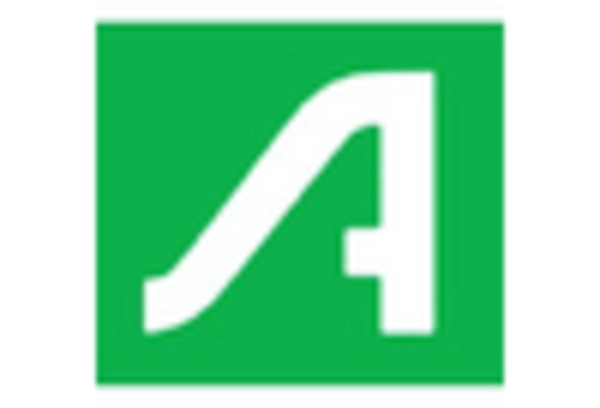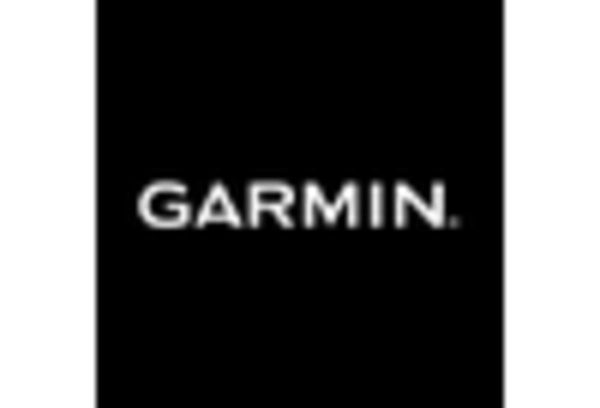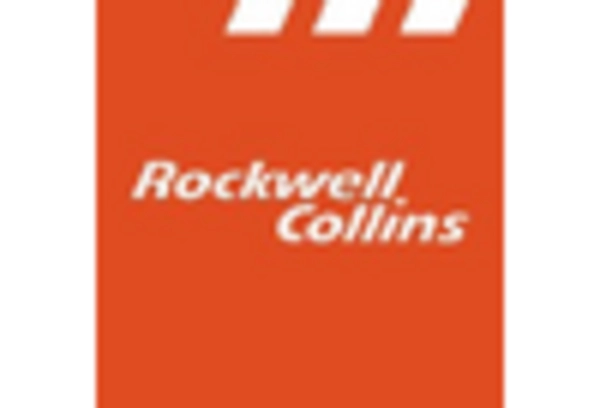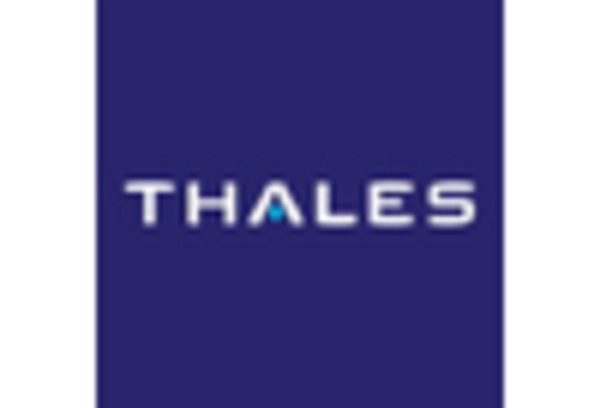Enhanced Safety and Security Protocols
Safety and security remain paramount in the aviation industry, driving advancements in the aviation beacons-technology market. Recent incidents have underscored the necessity for robust safety measures, prompting regulatory bodies to enforce stricter compliance standards. The FAA has introduced new guidelines that require the integration of advanced beacon systems to improve aircraft tracking and communication. This regulatory push is expected to increase the market value of aviation beacons, with estimates suggesting a potential growth of 15% over the next five years. Enhanced safety protocols not only protect passengers but also bolster the reputation of airlines and airports, making investments in beacon technology a strategic priority. As a result, The aviation beacons technology market will likely see increased demand as stakeholders prioritize safety and security in their operations.
Increased Air Traffic Management Needs
The aviation beacons-technology market is experiencing growth due to the rising demand for efficient air traffic management systems. As air traffic continues to increase, the need for precise navigation and communication technologies becomes paramount. The Federal Aviation Administration (FAA) has reported a steady rise in air traffic, with projections indicating a growth of approximately 3.5% annually over the next decade. This surge necessitates the implementation of advanced beacon technologies to enhance situational awareness and safety in crowded airspaces. Consequently, aviation beacons are becoming integral to modern air traffic control systems, ensuring that aircraft can operate safely and efficiently. The aviation beacons technology market is positioned to benefit from this trend as stakeholders seek to invest in innovative solutions that accommodate the growing volume of air traffic.
Growing Demand for Real-Time Data Solutions
The aviation beacons technology market is experiencing a surge in demand for real-time data solutions, driven by the need for improved operational efficiency. Airlines and airports are increasingly relying on data analytics to optimize flight operations, reduce delays, and enhance passenger experiences. The integration of beacons with data analytics platforms allows for real-time tracking of aircraft and ground operations, facilitating better decision-making. According to industry reports, the market for aviation data analytics is projected to reach $5 billion by 2027, indicating a strong correlation with the growth of beacon technologies. This trend suggests that as airlines seek to leverage data for competitive advantage, investments in aviation beacons will likely increase, further propelling the market forward.
Increased Investment in Airport Infrastructure
Investment in airport infrastructure is a critical driver for the aviation beacons-technology market. As airports modernize to accommodate growing passenger volumes and enhance operational efficiency, the demand for advanced beacon technologies is rising. The FAA has allocated substantial funding for airport improvement projects, with billions of dollars earmarked for upgrades over the next few years. This investment is likely to include the installation of state-of-the-art beacon systems that improve navigation and safety. Furthermore, as airports seek to enhance the passenger experience through technology, the aviation beacons-technology market stands to benefit significantly. The influx of capital into airport infrastructure projects suggests a robust growth trajectory for beacon technologies in the coming years.
Technological Innovations in Navigation Systems
Technological innovations are reshaping the aviation beacons-technology market, particularly in navigation systems. The advent of satellite-based navigation and advanced beacon technologies is enhancing the accuracy and reliability of aircraft positioning. Innovations such as Automatic Dependent Surveillance-Broadcast (ADS-B) are becoming standard, allowing for more precise tracking of aircraft in real-time. The FAA has been actively promoting the adoption of these technologies, which are expected to reduce operational costs and improve safety. As a result, The aviation beacons technology market will likely expand as stakeholders invest in these cutting-edge solutions to meet the evolving demands of the aviation sector. The potential for cost savings and improved operational efficiency makes this driver particularly compelling for industry participants.
















Leave a Comment